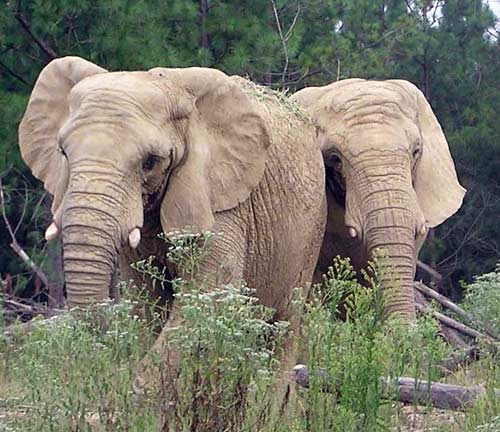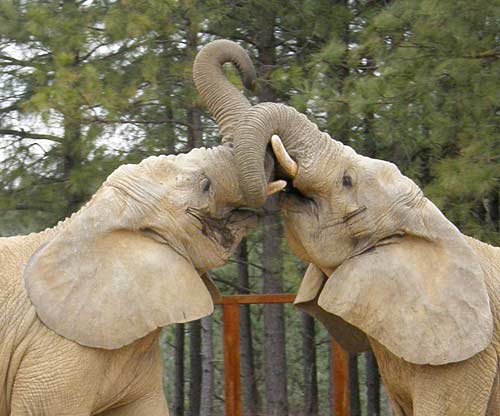We are sometimes asked about the size of Tange and Flora’s tusks; why they are smaller than African elephants in the wild, and do not appear to have grown very much in the 6 years they have been here at the Sanctuary. While elephant tusks are often trimmed and filed in captivity, that is not the case here. Just like people, an elephant’s hair, toenails and tusks grow at different rates. Genetically, some have long tusks, some short, some thin and others thick. The role that any captive environment plays on tusk formation is the result of having man-made, unnaturally hard surfaces like concrete and steel--these will often wear their tusks at a higher rate than you would see in the wild.
In a recent visit to Africa, researchers talked about right and left-handed elephants; they often have one tusk they favor more than the other for pulling roots and small trees, many times leading to deep grooves and additional wear in just one of their tusks.
Here at the Sanctuary, Flora’s tusks do not grow as fast at Tange’s--a genetic trait, plus Flora is a little harder on hers. She often chips them when playing in the barn and wears them rapidly when digging roots or stripping the bark off the trees. Also with Flora, the portion of the trunk that drapes over and around her tusks is longer and wider than Tange’s, which also contributes to the smaller appearance. When Flora raises her trunk and exposes her tusks, they are actually over 12 inches long.
In these photos, you can see the size difference in Tange and Flora's tusks vs. how much larger they actually are when they raise their trunks in play.


